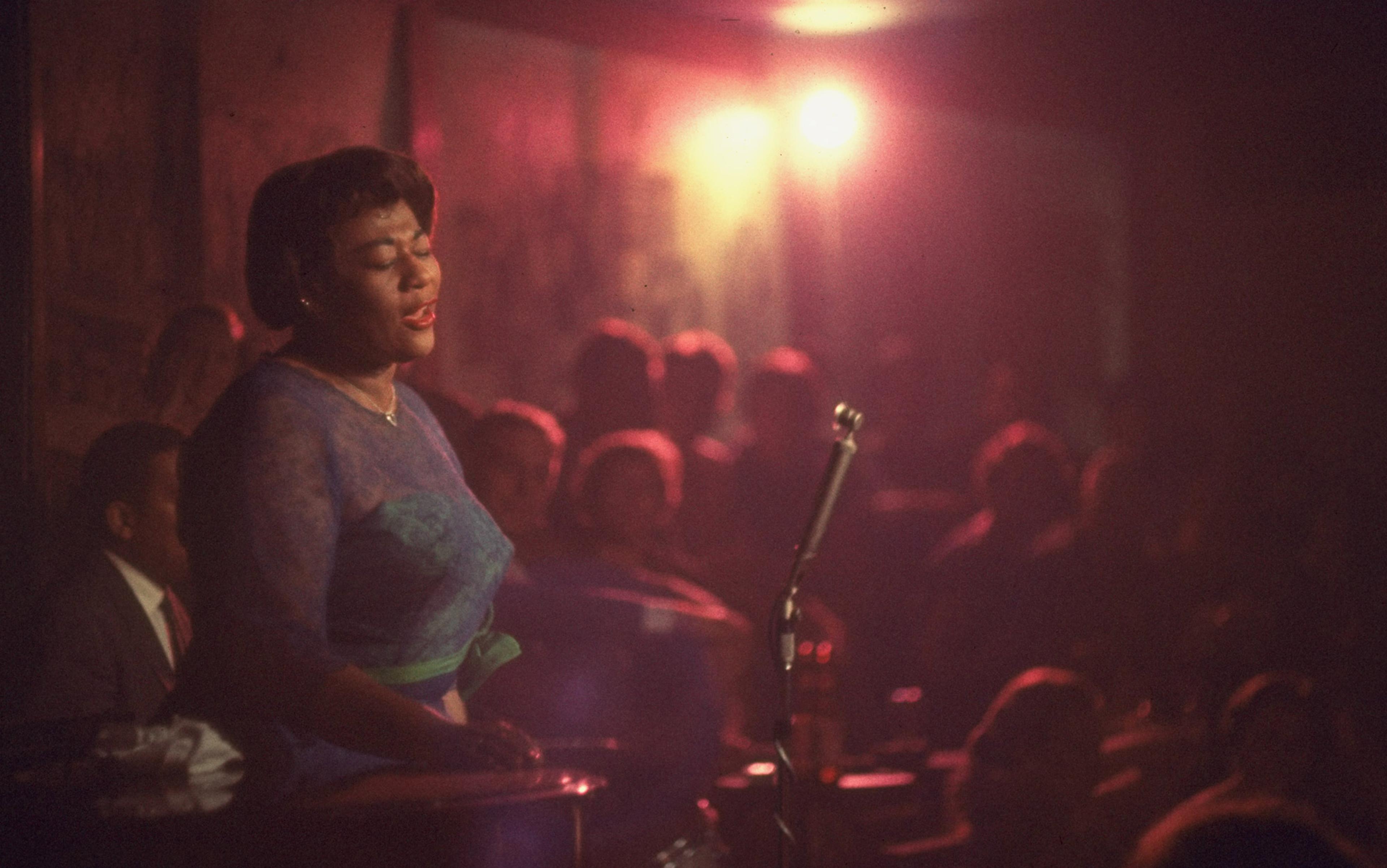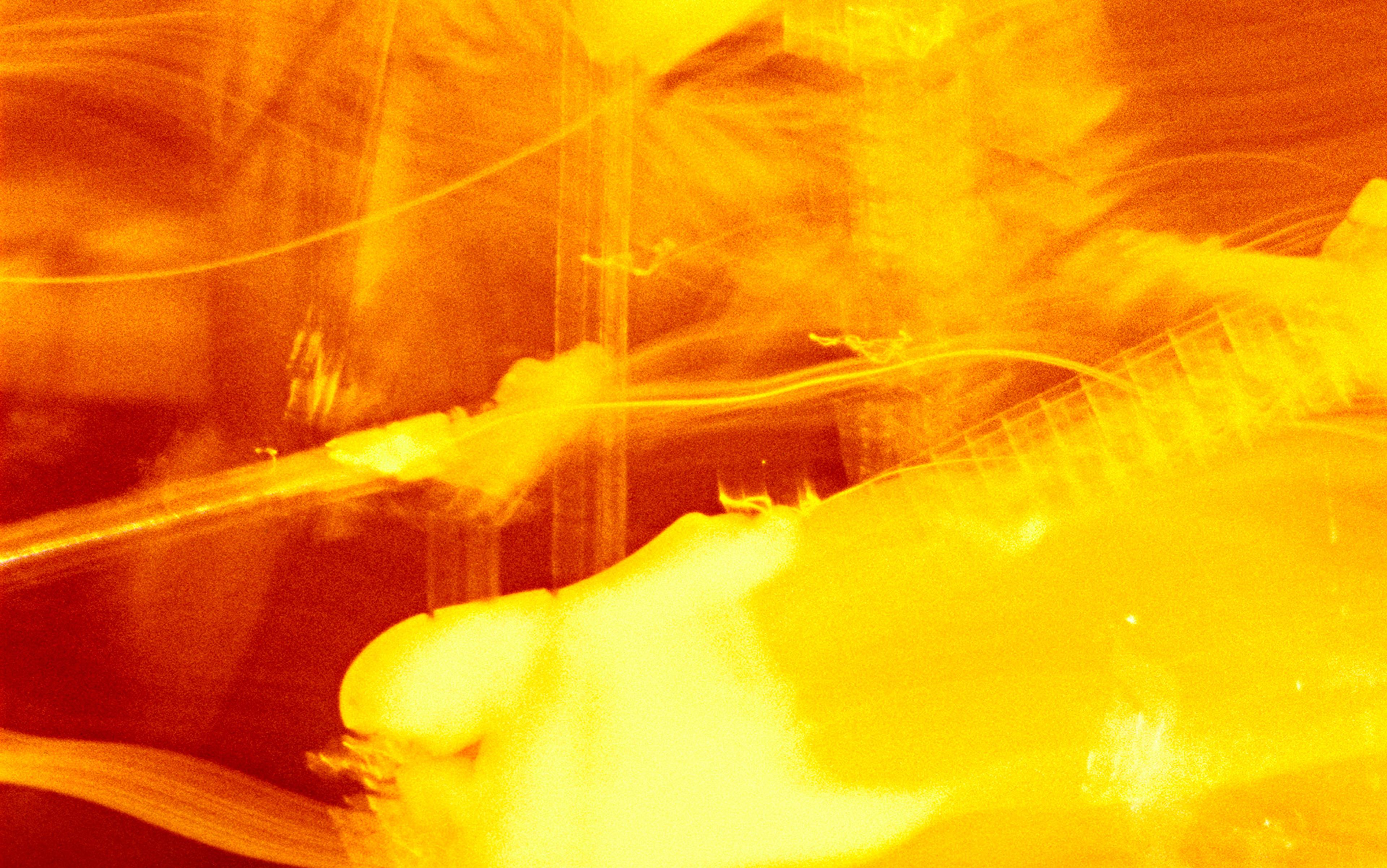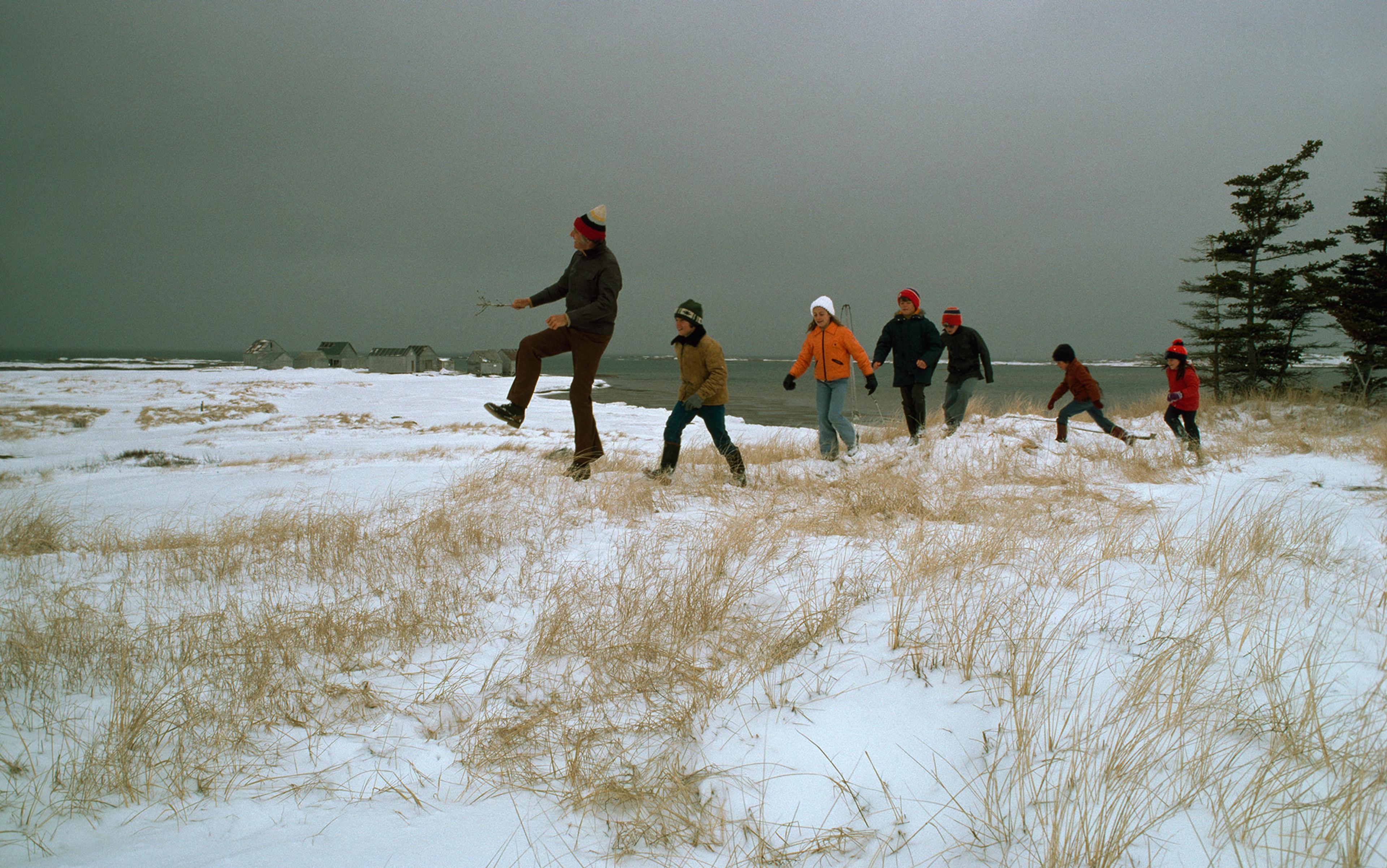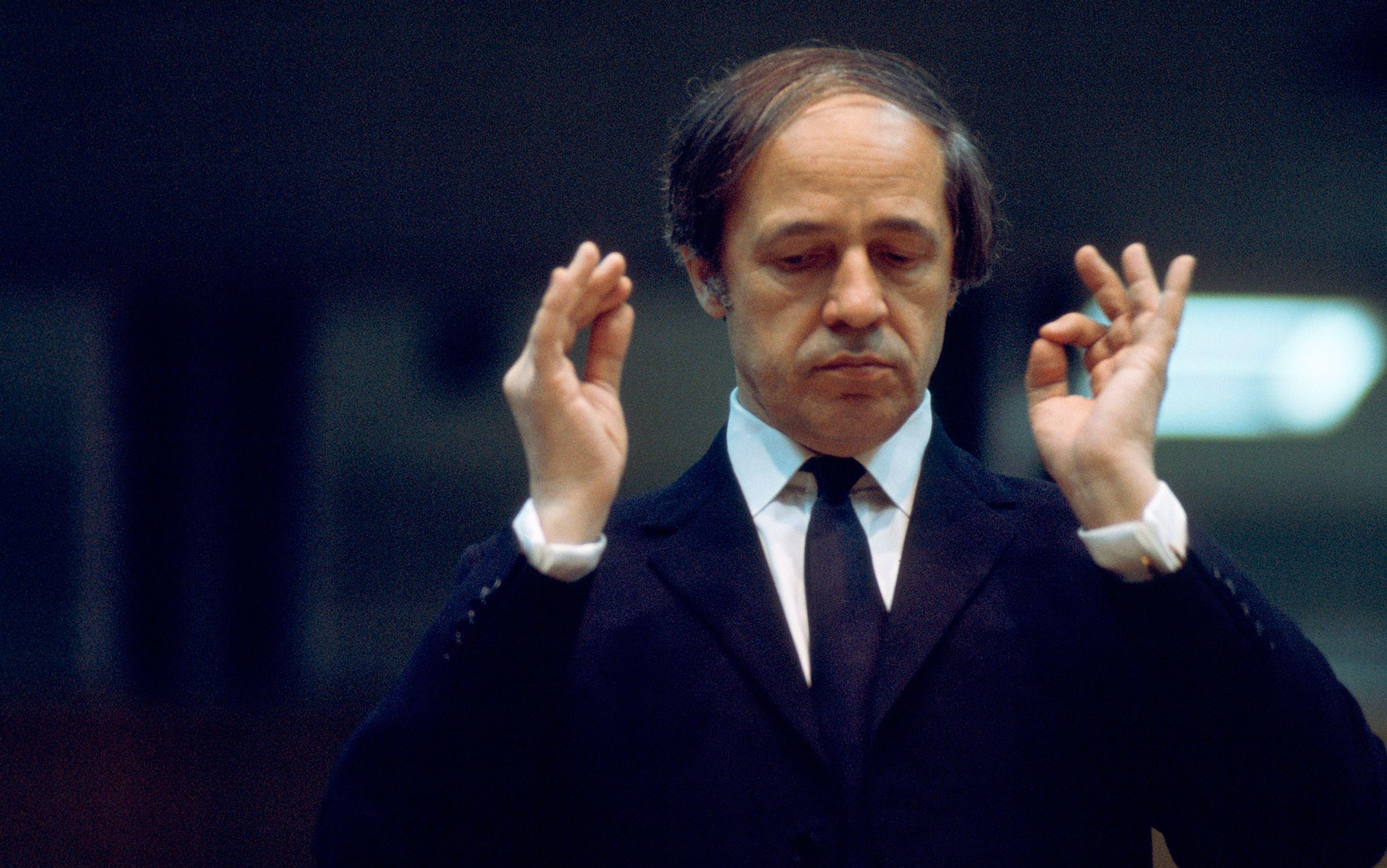The 55 Bar in Greenwich Village, with its bulging ceiling tiles and strings of fairy lights taped haphazardly to the walls, looks more like the clubhouse of a rural Irish sports team than a New York City jazz venue. Yet some of the musical experiences I’ve had in that dingy basement have bordered on the otherworldly. When I’m pinned to the back of my seat by the mind-warping rhythms of a drummer, or the harmonic ingenuity of an improvising guitarist, I often have the feeling that my body ‘gets’ things in a way my brain can’t. I find myself physically responding to nuances in the musical texture that have been and gone before I have time to formulate thoughts about them. I can speculate to some extent about what I’ve heard after the fact – that snare hit was perhaps a shade early; that cadence resolved just a fraction too late – but in the moment, I can’t quite articulate what it is that I’m reacting to. My grasp on what I’m hearing doesn’t seem cognitive. It seems visceral.
But talk of ‘visceral, non-cognitive grasping’ sounds hopelessly vague from a philosophical standpoint. In philosophy, it’s common to describe the mind as a kind of machine that operates on a set of representations, which serve as proxies for worldly states of affairs, and get recombined ‘offline’ in a manner that’s not dictated by what’s happening in the immediate environment. So if you can’t consciously represent the finer details of a guitar solo, the way is surely barred to having any grasp of its nuances. Claiming that you have a ‘merely visceral’ grasp of music really amounts to saying that you don’t understand it at all. Right?
Humans do, of course, represent features of the world, and perform mental operations on that information. We owe many of our most striking successes as a species to doing just that: it’s how we built aqueducts, and steam engines, and computers. But just as often, we allow ourselves to be borne along by the currents of what’s swirling around us without abstracting away from it. Getting swept up in a musical performance is just one among a whole host of familiar activities that seem less about computing information, and more about feeling our way as we go: selecting an outfit that’s chic without being fussy, avoiding collisions with other pedestrians on the pavement, or adding just a pinch of salt to the casserole. If we sometimes live in the world in a thoughtful and considered way, we go with the flow a lot, too.
I think it’s a mistake to dismiss these sorts of experiences as ‘mindless’, or the notion of a merely visceral grasp of something as oxymoronic. Instead, I think that the lived reality of music puts pressure on philosophers to broaden their conception of what the mind is, how it works, and to embrace the diversity of ways in which we can begin to grapple with the world around us.
Discussions about how we gain access to reality usually begin with perception. Yet philosophers of perception tend to be almost exclusively concerned with vision. Music, as a consequence, seldom makes it onto the agenda. This comes at a cost: not only has the immediate experience of events attracted far less philosophical attention than the experience of objects, but the role of the body in our experience of movement and change has been sidelined, too.
Now, the world contains many things that we can’t perceive. I am unlikely to find a square root in my sock drawer, or to spot the categorical imperative lurking behind the couch. I can, however, perceive concrete things, and work out their approximate size, shape and colour just by paying attention to them. I can also perceive events occurring around me, and get a rough idea of their duration and how they relate to each other in time. I hear that the knock at the door came just before the cat leapt off the couch, and I have a sense of how long it took for the cat to sidle out of the room.
Both objects and events have a structure. My desk lamp has parts – a square base, a hinged ‘neck’, a circular shade – which are related to each other in space in a particular way: the base is connected to the neck, which is connected to the shade, and so on. Similarly, events have temporal structure: they have parts that are related to each other in time (the knock at the door, for instance, is composed of three sequential raps roughly equivalent in duration). But events and objects differ in an important respect. If I want to examine the parts of my lamp, or figure out how exactly they fit together in space, I can squint at it, pick it up, or turn it around. But while the lamp obligingly submits to my investigations, events extend me no such courtesy. The ‘happenings’ in my environment are constantly sliding into the past, out of reach. And though I could chase after the lamp, were it suddenly to gather up its cable and flee, I can’t pursue a fleeting event to ‘get a good look’ at it.
You can experience a waltz as graceful without any idea that its grace arises via a distinctive temporal patterning
We can discern some coarse-grained properties of a drum-beat just by listening – the kick happens first, then a snare, with a hi-hat somewhere in the middle – but figuring out its precise temporal structure is much less straightforward. Was that snare slightly early, or was it slightly late? It’s like glimpsing the outlines of an intricate architectural filigree through a thick fog, without being able to clear the air. But even if fine-grained temporal structure is opaque to perception, it might not be entirely beyond our ken – because, fortunately, action is more sensitive to temporal detail than perception.
We can move our bodies in response to temporal details too fine for us to consciously experience. In a study published in 2000, the psychologist Bruno Repp at Yale University asked subjects to tap along with a rhythmic sequence of tones, delaying all the tones after a particular point in the sequence by the same tiny amount. He observed that subjects’ tapping patterns compensated rapidly for the change, despite the fact that they were unaware of it. Outside the lab, live performances often feature changes in temporal structure, such as small tempo increases, that even the players producing the sounds fail to notice even while they’re playing along.
Sometimes the temporal detail we’re tracking physically does manifest in our conscious awareness, in the guise of a characteristic ‘feel’. The beats played by the drummer Questlove on the album Voodoo (2000), by American songwriter and producer D’Angelo, have a distinctive temporal structure – the precise details of which we might fail to represent, but can experience as a kind of characteristic looseness, or trippiness. Likewise, you can experience a Viennese waltz as graceful without having any idea that its grace arises from its distinctive temporal patterning, where the first beat is lengthened, the second shortened, and the third given the barest of accents.
The subliminal tracking of temporal structure, which hovers around the fringes of conscious awareness, doesn’t just happen when we listen to and play music. It’s a core component of how we comprehend speech, too. In fact, everyday speech is saturated with fine-tuned musical features that are crucial to making ourselves understood. Say the following two sentences aloud:
I was happy.
I was happy.
You probably lengthened the word ‘was’ the second time around. By doing so, you managed not only to convey ‘I was happy in the past,’ but also to imply ‘… though not any more.’ Detecting temporal structure in sound is key to grasping what other people mean, and also to conveying meaning ourselves.
But the success of a face-to-face conversation involves more than just processing an interlocutor’s utterance and emitting a series of comprehensible noises. Consider the following everyday exchange:
Good morning! How are you doing?
I’m very well, thanks. How are you?
I’m doing great. It’s a beautiful day out there.
It certainly is!
Now imagine this brief conversation happening again, but this time with each utterance beginning half a second before the previous one has finished. Or imagine each utterance happening 10 seconds after the previous one. It’s not just what you say that matters, or how you say it: the timing and rhythm matters, too.
A 2009 study by the sociologist Tanya Stivers at the University of California, Los Angeles, and her colleagues found that it’s the norm in most languages and cultures to avoid overlaps and to take turns in conversation, with some local variation. Delivering an affirmative response to a question within 36 milliseconds is judged ‘on-time’ in Japan, while in Denmark you can take 203 milliseconds and still be judged timely. Even though the ‘huge’ inter-turn Nordic silences observed by non-Nordic anthropologists aren’t all that large, such comments reveal that deviations from one’s own acculturated norms are seen as highly salient. In other words, what is experienced as a ‘delay’ – and thus as an indicator of dissent, since confirmations are generally delivered faster than opposing statements – differs across cultures. A congenial Danish tourist in Japan might well be puzzled to find herself taken for something of a contrarian.
Musical rhythms call for conscious movement in a way that visual, tactile and even spoken rhythms do not
Rhythmic turn-taking is not the only musical aspect of speech. Greetings and farewells are ordinarily delivered in the upper part of the vocal register (hence why it’s offputting when someone flatly intones: ‘Goodbye’). The difference between expressing sincerity or sarcasm – ‘Well, isn’t that just great!’ – boils down to differences of pitch, syllable duration and articulation. And it’s hard to address a small baby without finding oneself using hugely exaggerated pitch contours, not to mention repeating words ad nauseum (an instinct for which we shouldn’t punish ourselves, however, since there’s evidence that repetition and over-the-top prosodic features aid a child’s linguistic learning). The most stirring parts of political speeches often involve repetition, and sometimes even embryonic rhythms (‘we shall fight on the beaches, we shall fight on the landing grounds’). As Cicero put it in his History of Famous Orators, the would-be master of rhetoric needs to realise that ‘even in Speaking, there may be a concealed kind of music’.
There might also be a concealed kind of movement. In a 1970 study, the psychologist Adam Kendon noticed that when a speaker singles out an individual within a group, the person being addressed begins to move and nod. Kendon speculated that the addressee thereby ‘differentiates himself from the others present, and at the same time he heightens the bond that is being established between him and the speaker’. The addressee also tended to move in time with emergent rhythms in the utterances of the speaker (an observation that recent studies have confirmed). Kendon hypothesised that the coordination of movement between speaker and listener might enable the listener to time his own entry as a speaker, much as a musician might begin to move conspicuously with the music before she enters with her part.
Movement clearly plays a role in speech, yet its role is importantly different from the role it plays in music. If you were to draw your interlocutor’s attention to the ways in which you were timing your movements, everyone would start feeling a bit awkward and the whole communicative project would derail. But attending to musical movement does not destroy its effect. If anything, it heightens it: dancing becomes more enjoyable the more you pay attention to your movements, and the movement of those around you. Musical rhythms call for conscious (as opposed to unconscious) movement in a way that visual, tactile and even spoken rhythms do not: we seem not only to hear musical beats, but to feel them, too. So just how is it possible to feel a sound in the first place?
It’s 1665. The pressing need to find a reliable way of measuring longitude at sea has led to an arms race among astronomers and mathematicians, who are scrambling to find an accurate method of measuring duration. The Dutch astronomer Christiaan Huygens has recently been catapulted into pole position by the accuracy of his new invention, the pendulum clock.
On 22 February, Huygens writes to R F de Sluse to tell him about a curious phenomenon he has observed in his workshop. Having hung two of his clocks from a common wooden beam placed across the backs of two chairs, Huygens had gone about his business before returning to find the clocks showing an ‘odd sympathy’. The pendula had synchronised. Initially baffled, Huygens eventually realised that each clock was producing small vibrations in the wooden beam, and that it was the interaction of these two patterns of vibration that was responsible for the sympathetic movement.
The spontaneous synchronisation of oscillating systems has since become known as ‘entrainment’, and it has been observed in a vast array of physical and biological systems – from the illumination patterns of fireflies to the wingbeats of free-flying barnacle geese to the tendency of an applauding audience to start clapping in synchrony.
Movement to musical rhythms used to be cast in terms of computation: the listener extracts information from musical sounds, forms a temporal representation and transforms that into an action signal. But more recently, psychologists have begun to model rhythmic musical movement as a process of entrainment, whereby oscillations inside the listener become synchronised with rhythmic cues in the environment in a relatively automatic, spontaneous way. No intervening computations are required: the existence of natural resonances between brain, body and world is enough.
If we are the only speaking apes, we would appear to be the only dancing apes, too
Appealing to little oscillators inside us might seem worryingly occult until one recalls that the brain isn’t just an inert chunk of meat. The activity of neurons can give rise to macroscopic patterns as a consequence of how they’re connected to each other – in the same sort of way that individual spectators at a football match, sensitive to the movement of their neighbours, can collectively make a Mexican wave.
Studies have shown that neuronal groups in our brains do, indeed, entrain to rhythmic stimuli. Rhythm-processing involves increased coupling between auditory and premotor cortex, a part of the brain involved in planning and executing bodily movement. It also recruits the basal ganglia, a group of structures deep in the brain involved in motor control, action selection and learning. Intriguingly, even when subjects are instructed not to move in response to what they hear, the basal ganglia is recruited in the processing of auditory beats – though not when they are presented with regular visual rhythms. Patients with Parkinson’s disease, who suffer from impaired basal ganglia function, show deficits in duration-discrimination and the ability to synchronise their finger taps with auditory rhythms.
It seems that moving in response to temporal structure is not something we have to ‘work out’ how to do. Detecting and responding to temporal patterns, in music and elsewhere, is more likely a matter of allowing oneself to be borne along by the natural, spontaneous resonances that already exist between our bodies, our brains and the temporal contours of the sounding world.
Most creatures, even our nearest primate relatives, don’t seem to experience musical beats in quite the same movement-involving way that we do. If we are the only speaking apes, we would appear to be the only dancing apes, too. But we shouldn’t be too hasty in our self-congratulation. Entrainment to other rhythmic stimuli in the environment is ubiquitous in the animal kingdom – and the uses to which our fellow beasts can put environmental rhythms is impressive indeed.
Where do birds go in the winter months? The Ancient Greeks hypothesised that they hibernated in holes in the ground, or transformed into other species of birds; other civilisations thought that they became barnacles, or concealed themselves at the bottoms of lakes. Such bizarre theories are, in a way, less implausible than what we now know to be true: that creatures weighing less than a box of matches can fly non-stop for thousands of miles over land and sea with no navigational aids, consuming their own bodies as fuel, calculating their route with such precision that they often end up landing not only in the same tree, but on the same twig as they did the year before. And a few months later, they do it all again in reverse.
So-called ‘calendar birds’ migrate at the same time every year, regardless of weather. Magnetic sensitivity and the sense of smell are thought to be instrumental to the success of these voyages. But scientists also think that migrating birds are highly sensitive to time: both to elapsed duration, and also to the presence of circannual, or yearly, environmental rhythms. The ability of these birds to ‘know’ exactly when to depart is thought to rely on entrainment to patterns in the environment that repeat annually, such as changes in the light-dark cycle. Once they get to their winter breeding grounds, where the light-dark cycle is reversed, an internal ‘clock’ is thought to keep track of how much time has elapsed since their departure; a cascade of biological events, such as fat deposit and even the shrivelling of internal organs, begins in the weeks before it’s time to return home. Once the voyage is underway, in either direction, entrainment is what allows the bird to keep track of regularities in the Earth’s magnetic field, and the ‘clock’ keeps count of how long it has been flying on each ‘bearing’.
The tiny Northern wheatear doesn’t travel the 15,000 km from Alaska to southern Africa twice a year by consciously representing the route, or the environmental patterns by which it is calibrated. Maybe the bird blindly implements the instructions of its biological sat-nav like a computer executing code: there might be ‘nothing it’s like’ for the bird to be sensitive to circannual rhythms. However, the contrary is also possible: perhaps at least some of those environmental patterns ‘feel’ a certain way to the bird, much as particular rhythmic patterns feel ‘trippy’ to us despite our failure to represent their precise structure. In 1851, the English writer Henry Mayhew noted that, as the season for migration approaches, ‘the caged nightingale shows symptoms of great uneasiness, dashing himself against the wires of his cage or his aviary, and sometimes dying in a few days.’ It is difficult to read such accounts and not sense what it is like for a bird to feel the pull of the voyage.
Entrainment provides a powerful theoretical tool for exploring how we manage to resonate with the world, and each other, in real time. It offers an embryonic account of how we can act astutely even when there’s no time for conscious thought. And while many of the entrainment processes that regulate the functioning of our brains and bodies never make it into awareness, some of them – like viscerally ‘getting’ a guitar solo – arguably do.
Our conscious experience of time is philosophically puzzling. On the one hand, it’s intuitive to suppose that we perceive only what’s happening right now. But on the other, we seem to have immediate perceptual experiences of motion and change: I don’t need to infer from a series of ‘still’ impressions of your hand that it is waving, or work out a connection between isolated tones in order to hear a melody. These intuitions seem to contradict each other: how can I perceive motion and change if I am only really conscious of what’s occurring now? We face a choice: either we don’t really perceive motion and change, or the now of our perception encompasses more than the present instant – each of which seems problematic in its own way. Philosophers such as Franz Brentano and Edmund Husserl, as well as a host of more recent commentators, have debated how best to solve the dilemma.
But the experience of time involves more than just the perception of events occurring at a distance from us. We also experience time by instigating events through our actions, as well as encountering the actions of others. To relish the flow of a chat with a friend, or to feel the groove of a beat, is to have a distinctive kind of temporal experience where the observation of time becomes entwined with how one inhabits it – but in each case, the experience is less a matter of representing temporal structure than of entraining to it, resonating with it.
Reasoning is often a matter of being ‘struck’ by a thought, of having one’s intellect set in motion by ideas
Is resonance without representation always a mindless affair? Not necessarily. Reason wasn’t always thought of in terms of representation, for one thing. In 1769, the French philosopher Denis Diderot offered the following characterisation of the thinker, in his dialogue with his friend Jean Le Rond d’Alembert:
The sensitive vibrating string oscillates and results for a long time after one has plucked it. It’s this oscillation, this sort of inevitable resonance, that holds the present object, while our understanding is busy with the quality which is appropriate to it. But vibrating strings have yet another property – to make other strings quiver. And thus the first idea recalls a second, and those two a third, then all three a fourth, and so it goes, without our being able to set a limit to the ideas that are aroused and linked in a philosopher who meditates or who listens to himself in silence and darkness.
This is a far cry from the modern characterisation of the philosopher as one who contemplates propositions from a position of detachment, in order to reflect on the world without being moved by it. For Diderot, at least, the philosopher must listen keenly, and attune himself to the patterns that he seeks to understand. But even cursory introspection reveals that the processes of reason themselves are saturated with resonance. Reasoning is often a matter of being ‘struck’ by a thought, of having one’s intellect set in motion by ideas. We say that a speaker’s message ‘resonated’ with us when we not only comprehend it, but find it compelling. Far from being at odds with reflection, then, resonance might be its close companion.
Human attempts at making sense of the world often involve representing, calculating and deliberating. This isn’t the kind of thing that typically goes on in the 55 Bar, nor is it necessarily happening in the Lutheran church just down the block, or on a muddy football pitch in a remote Irish village. But gathering to make music, play games or engage in religious worship are far from being mindless activities. And making sense of the world is not necessarily just a matter of representing it.
Music is a reminder to philosophers of mind that perceptual experience isn’t exhausted by vision. It prompts the recognition that conscious experience is dynamic, encompassing motion and change. But music also nudges philosophers toward a conception of the mind as more than just a very sophisticated calculator. If humans are representing machines, we are resonant bodies, too.






